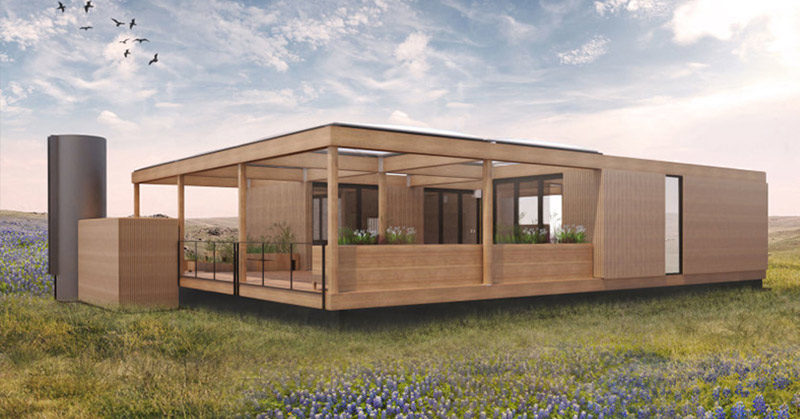As the world’s population continues to grow, architects, city planners, engineers, and researchers are constantly trying to come up with new and innovative ways to house everyone in a sustainable way.
This means not only having enough housing for everyone, but also designing homes that use resources efficiently. In 2015, a team from the University of Texas at Austin and Technische Universitaet Muenchen in Germany designed a sustainable modular home that would run on rainwater and sunshine alone [1].
The Solar Decathlon
Every year, the US Department of Energy hosts a Solar Decathlon, a collegiate competition in which student teams take part in ten contests that test their efforts to plan and construct a full-sized, solar-powered house.
The winning team is the team that blends energy, water efficiency, and energy production in the best possible way while still maintaining market potential [2].
The students from the two universities teamed up to design the NexusHaus, a 784-square-foot home that addressed the strain the city of Austin is experiencing on its water and electricity infrastructure [3].
A Sustainable Modular Home
The NexusHaus was designed over the course of two years and is a net-zero energy and zero-water capable house. It uses a combination of photovoltaic electricity generation, integrated thermal/water storage systems, and smart home management [4].
The house was made to collect its own water, provide vegetables and fish for consumption through a closed-loop aquaponics system, and considered environmental control factors that are unique to Austin, including air circulation and solar heat gain from the intense sun the city gets during the summer [3].
The design of the home deployed two features that are typically seen in Texas architecture: the dog trot and a large covered deck on the south side. The clever design would allow it to function in areas with lots of sunlight, and uses some other innovations like drinking rainwater reuse and greywater recycling [1].
A Goal for the Future
Austin is one of the fastest-growing cities in the United States, and as such could have difficulty keeping up with the demand for water and electricity in the city. The goal of the NexusHaus was to be a prototype for a new type of sustainable modular home that could be reproduced in large quantities in an assembly plant within the city [3].
The design was the first ever water-independent home in the United States, and could have a significant impact on home-builders in drought-prone areas and across the country.
Keep Reading: Austin Is Getting a Village of 3D-Printed Affordable Homes—and They Look Incredible
- https://www.goodshomedesign.com/texas-modular-home-will-run-on-rainwater-and-sunshine-alone/
- https://texashillcountry.com/texas-modular-home-powered-sunshine-rainwater/
- https://www.solardecathlon.gov/2015/competition-team-texas-germany.html
- https://soa.utexas.edu/work/nexushaus-solar-decathlon#:~:text=Nexushaus%20is%20the%20UTSOA’s%20second,Technical%20University%20of%20Munich%2C%20Germany






